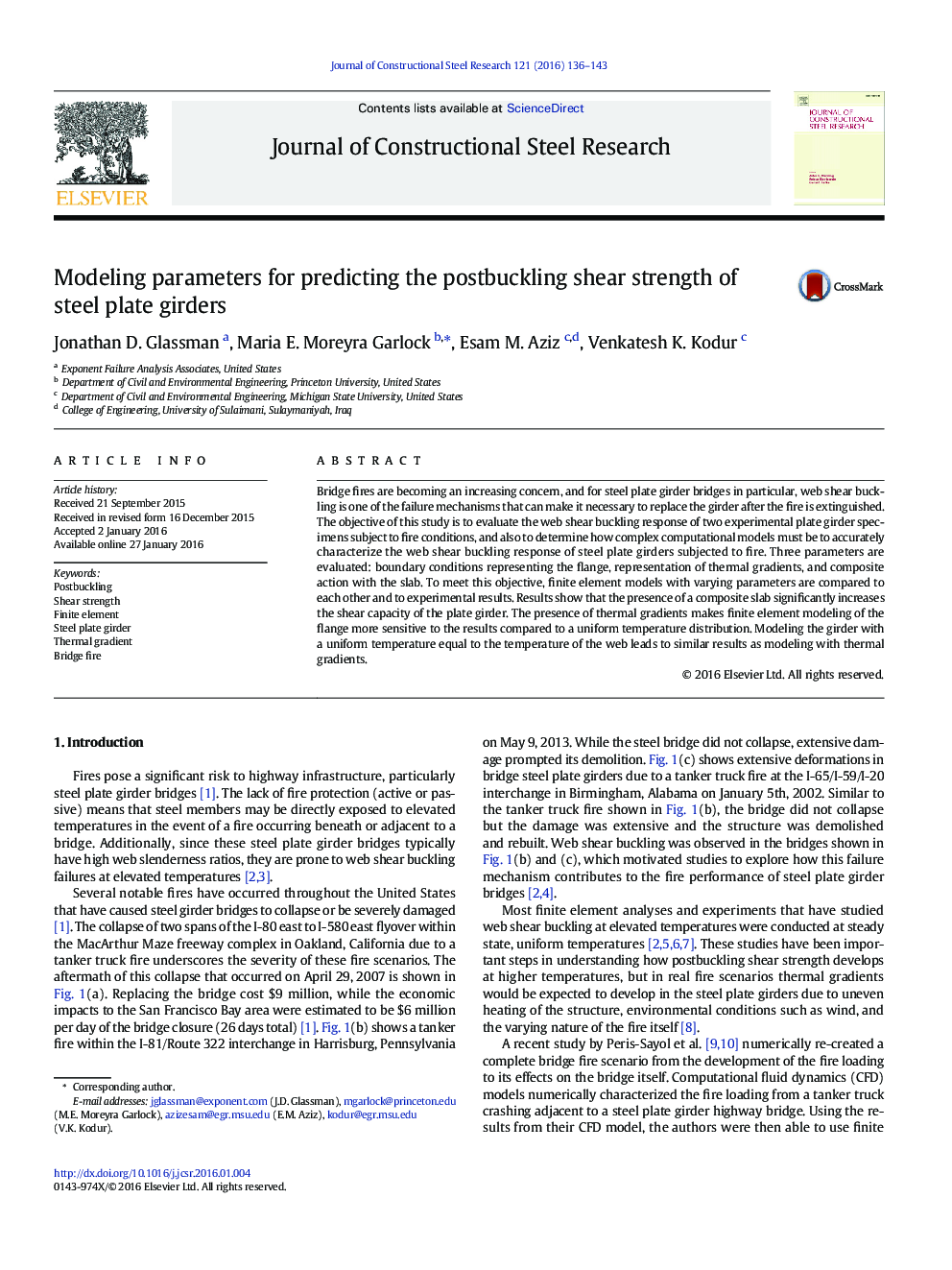| Article ID | Journal | Published Year | Pages | File Type |
|---|---|---|---|---|
| 284223 | Journal of Constructional Steel Research | 2016 | 8 Pages |
•Experimental and finite element evaluations of the web shear buckling response of two steel plate girder specimens subject to fire conditions.•Evaluation of 3 parameters to assess the degree of complexity needed to accurately model web shear buckling under fire loads.•Finite element modeling of composite action in the presence of uniform high temperatures and thermal gradients.•Composite action identified as significant to the development of postbuckling shear strength under fire conditions.
Bridge fires are becoming an increasing concern, and for steel plate girder bridges in particular, web shear buckling is one of the failure mechanisms that can make it necessary to replace the girder after the fire is extinguished. The objective of this study is to evaluate the web shear buckling response of two experimental plate girder specimens subject to fire conditions, and also to determine how complex computational models must be to accurately characterize the web shear buckling response of steel plate girders subjected to fire. Three parameters are evaluated: boundary conditions representing the flange, representation of thermal gradients, and composite action with the slab. To meet this objective, finite element models with varying parameters are compared to each other and to experimental results. Results show that the presence of a composite slab significantly increases the shear capacity of the plate girder. The presence of thermal gradients makes finite element modeling of the flange more sensitive to the results compared to a uniform temperature distribution. Modeling the girder with a uniform temperature equal to the temperature of the web leads to similar results as modeling with thermal gradients.
